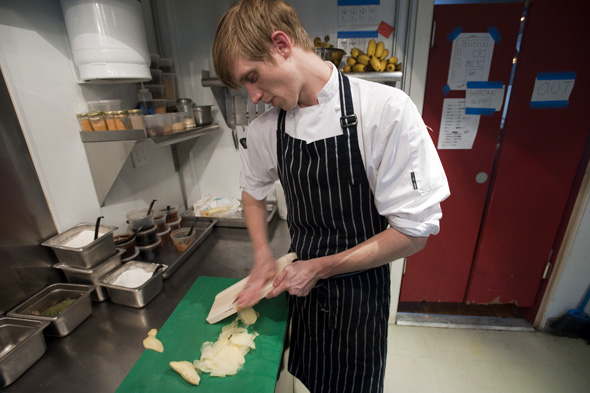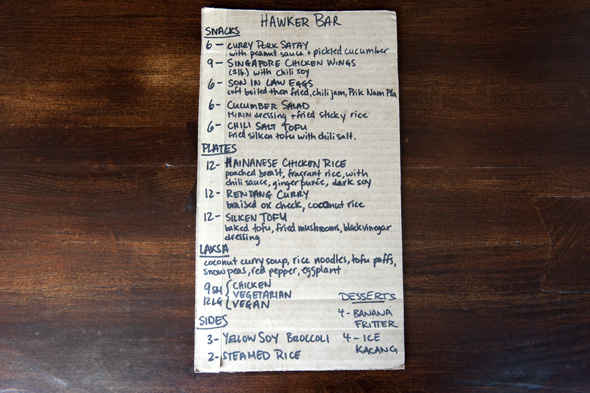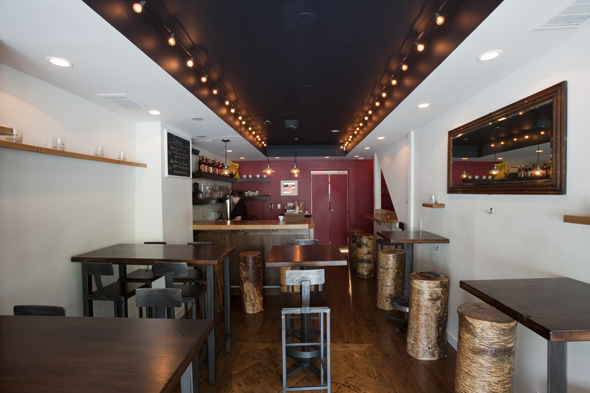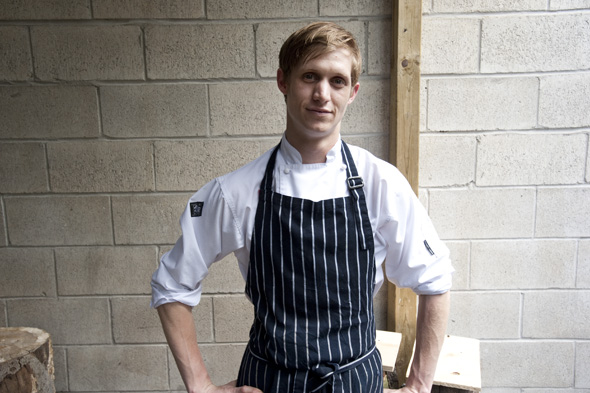
Get to Know a Chef: Alec Martin, Hawker Bar
Chef Alec Martin has been with Hawker Bar since its inception 7 or so weeks ago, and was previously with Harbour Sixty. Originally from Australia, the relatively young chef has brought an adapted menu of Singaporean street food to Ossington Avenue, and one need only step into the modestly-sized restaurant and inhale to get a sense of the complex flavours and ingredients that are melding behind the scenes. I sat down with Alec in the afternoon break between lunch and dinner service to talk laksa and food trucks.
Did you always want to be a chef?
Pretty much since I was young. I come from a small country town in Australia, so when you want a job as a kid, you're either working in a kitchen or a cafe, so I started as a dishwasher around 13. I left school and started an apprenticeship when I was 16, and I was qualified by 20. As soon as I started working in kitchens, I loved it.

Where did you learn to cook?
At a number of different places. I picked up Hawker Bar's style of cooking at an Australian restaurant called Ginger Boy. I was there for 4 years and I worked my way up to sous chef, then I met my partner there, who's Canadian. That's how I came to be here.
What dish do you like cooking the most?
From Hawker Bar's menu, the deep-fried sea bream, just because its presentation factor is great. Also, the chilli crab--I like pretty much everything that comes out of the kitchen, because it's my menu. Outside of the restaurant, I like cooking braised lamb shanks. I'm a country boy.

What's the secret to preparing a quality bowl of laksa?
First of all, fresh ingredients. Also, it's something you can't really rush. You need to make the curry paste, and you need to cook it up slowly. I made a batch today--I had it on the stove at 7:30 a.m. and it finally came off at 1 p.m. You need to cook the paste on a low heat for 3.5 hours, add the coconut milk and vegetables, take it up to a slow simmer, then double-strain. You need patience, but it's worth the wait.
In what ways have you modified or adapted traditional Singaporean recipes for the Ossington customer base?
My food is definitely more Westerinized. I hold back the chilli quite a bit--it's easier to add it then to remove if someone wants it spicier. Also, it's a bit sweeter, and I add a few more drops of sugar to the dishes than in traditional Singaporean food.

Are there certain dishes you'd love to cook but don't think would work for a Torontonian audience?
Not really. I think every now and then, I have ideas, but Toronto has a fairly broad spectrum of people, and the restaurant scene is evolving. People are going to be more willing to try new flavours. If something doesn't work on the menu, I'll take it off.
Where do you source your ingredients from?
A couple places, such as Canada Herb and Fruits down the street. 90% of our ingredients come from Spadina Ave. There's a nice Asian lady I've become friends with over the last few weeks and she helps me out quite a bit. Some products originally come from Thailand, but I'm getting them from local businesses.

Would you ever do a food truck?
Not me, no. It doesn't interest me, as it's not the style of work that I like to do. I like the idea, of course--I think it's great. I've worked in tiny kitchens before and that was enough, but the restaurant sometimes does catering gigs.
What do you do for fun?
At the moment, I don't really have time. I'm here a lot, but I suppose with time off, I like to go to restaurants.

RAPID FIRE QUESTIONS
Most underrated ingredient? Galangal. It's the magic part of a laksa.
Best culinary tool? Mandoline.
David Chang or Daniel Boulud? Not fair, because I don't know either.
Favourite Toronto restaurant? Origin.
What would people be surprised to find in your fridge? It's only got beer.
What's one food you can't live without? Rice.
What's one food trend that needs to end? Food trucks.
For more chef profiles, visit our Toronto Chefs Pinterest board.
Photos by Morris Lum
Latest Videos
Latest Videos
Join the conversation Load comments







